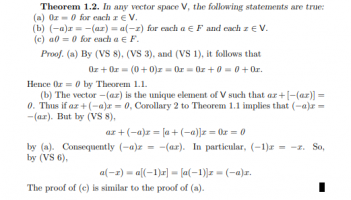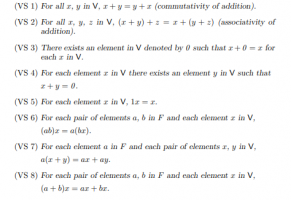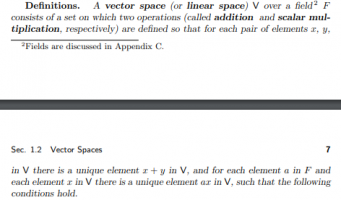AbdelRahmanShady
Junior Member
- Joined
- Jul 20, 2021
- Messages
- 123
I am trying to read a book about vector spaces, without taking introductory courses about linear algebra to be rigorous from start. Any way I stumbled across
this proof

and my problem is in proof b.

cant he use vs 6. what prevents him from doing so.
then (-a)x = (-1 * a)x = -(ax) = (a * -1)x = a(-x)
what is error in my proof so he didnt use it
this proof

and my problem is in proof b.

cant he use vs 6. what prevents him from doing so.
then (-a)x = (-1 * a)x = -(ax) = (a * -1)x = a(-x)
what is error in my proof so he didnt use it



